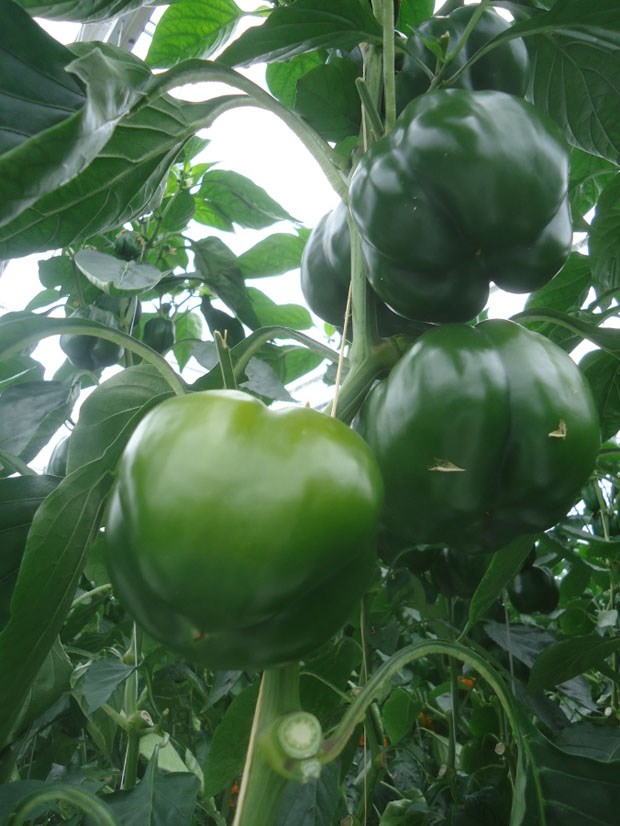Last Saturday Farmer Jim and I headed over to Westcoast Greenhouses as they were one of the participating greenhouses open that day. To celebrate BC Greenhouse day several greenhouses were open to the public. It was a good way for people to learn about how their food is grown. Although I grow food in my urban garden, it can’t compare to what the greenhouses produce. Did you know there are 62 BC greenhouses? I was surprised considering the size of our province that there weren’t more. Our BC Greenhouses produce tomatoes, peppers, long English cucumbers, eggplant and butter lettuce.
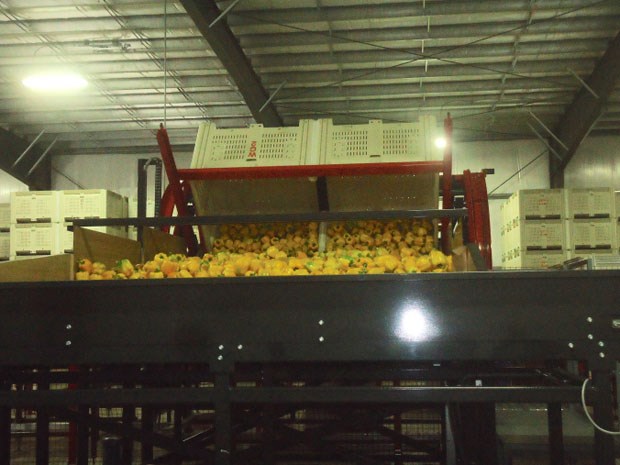
I found the packing area of the greenhouse very interesting. The yellow peppers were tipped out of large bins and on to a conveyor belt which led them to a grading station. Six employees carefully inspected each pepper and separated the second grade from the first grade peppers. Just the volume above is astonishing to see.
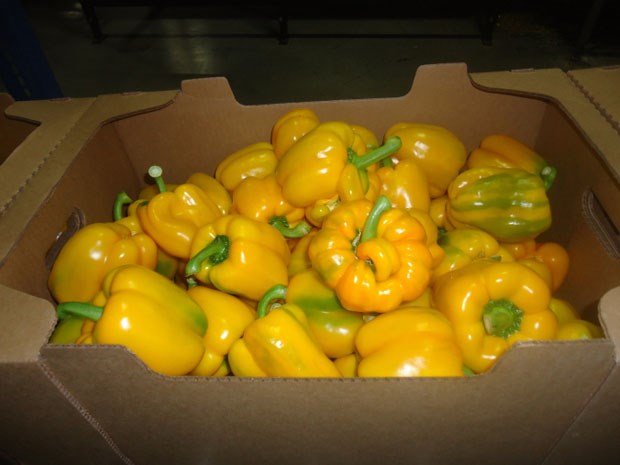
As I stood below, boxes of grade two peppers came to a stop before me. You can see the slight imperfections on the peppers. Unfortunately as consumers we are way to picky when it comes to our produce. You are probably wondering what they do with the second grade peppers. They are totally fine to use. They are just a bit misshapen. These peppers are sold to restaurants.
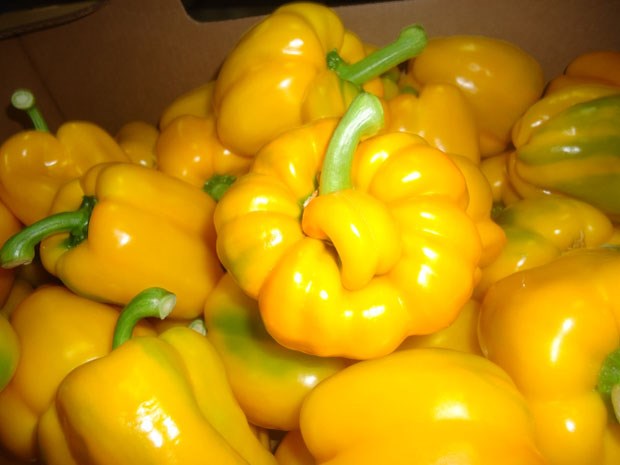
This is the kind of pepper that restaurants have no problem using. Sometimes the stem has fallen off or there may be too much green colour on the pepper. It turns out that some retailers do sell a line of ‘Imperfect’ vegetables so check it out to see who is selling them in your area. It’s time we bought more of these and the price should be less than the grade one peppers. I remember the days of working in retail and selling fruits and vegetables at reduced prices. Okay, I am showing my age but it wasn’t that long ago. Now it’s not allowed. Way too much food is thrown away. I am glad the peppers from greenhouses are used by restaurants. Some even go to food banks.
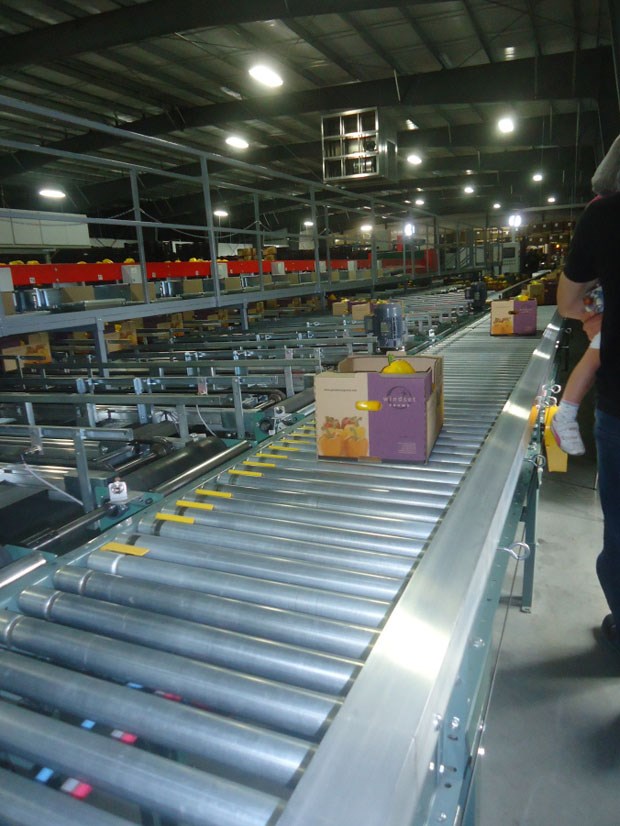
The grade one peppers travel under a camera which photographs each one and tallies each peppers size and weight. This way the computer knows exactly which peppers to send to the waiting boxes. Each case will hold 5 kg of peppers and with the computers help the weight will be as close to 5 kg without going over. Above full boxes travel to their final storage area to await shipping.
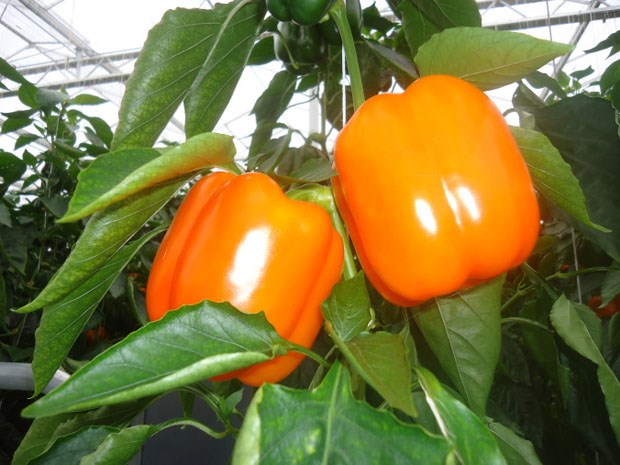
At the open house we walked down a long row and on each side were even longer rows of pepper plants in various stages of production. Above are the fully ripe orange peppers waiting to be harvested. The plants themselves were at least ten feet high and will grow another five to six feet. Height is determined by the type of pepper being grown. In this greenhouse we saw red and orange peppers. An employee was always nearby to ask questions.
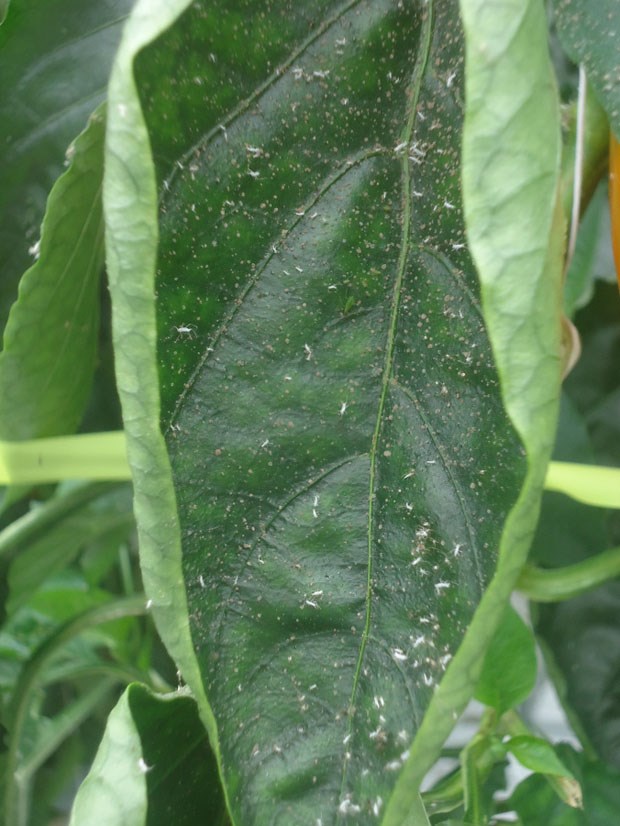
The employee talked about how they use beneficial insects to control typical greenhouse pests such as aphids, thrips and whitefly. These pests love the warm humid environment of the greenhouse.
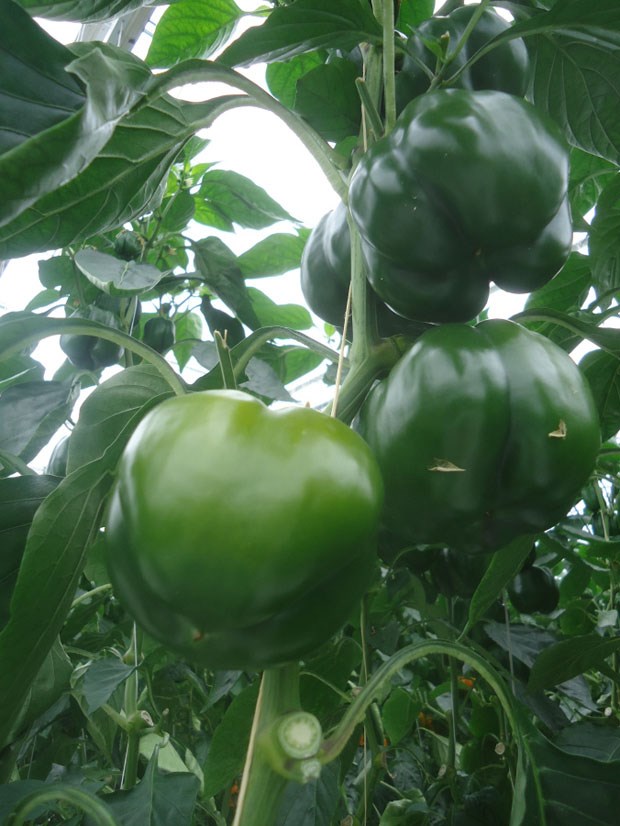
Here the peppers are still green. Constant trimming of foliage is done to keep the plants from crowding each other and to let workers in between the rows to harvest.
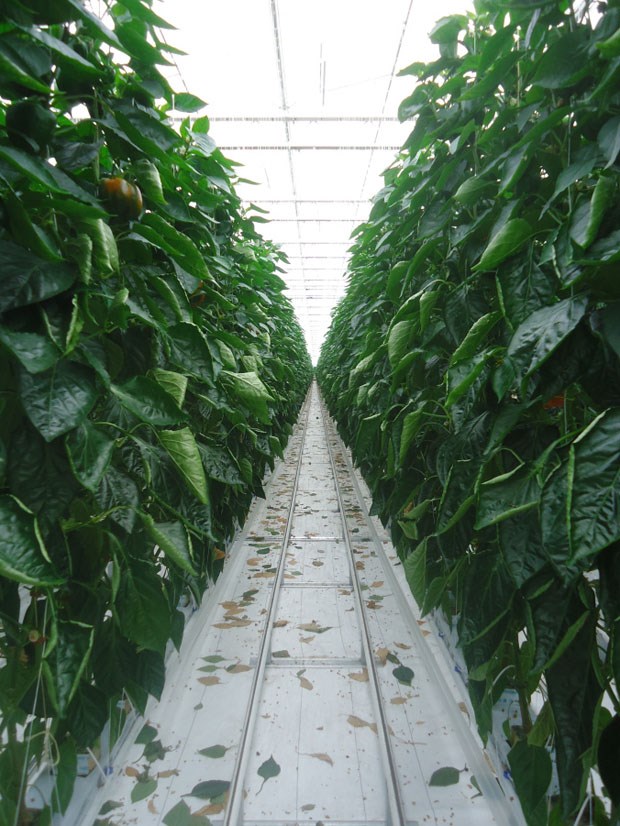
This is a photo of one row of peppers. The two rails along the floor supply heat to the greenhouse. They also allow equipment to travel along their lines so a worker can prune and harvest the plants. The equipment used can be moved up or down so the worker can easily reach the plant at any level. I noticed each row was numbered. I would imagine numbering would have to be used to keep track of what was done in each row.
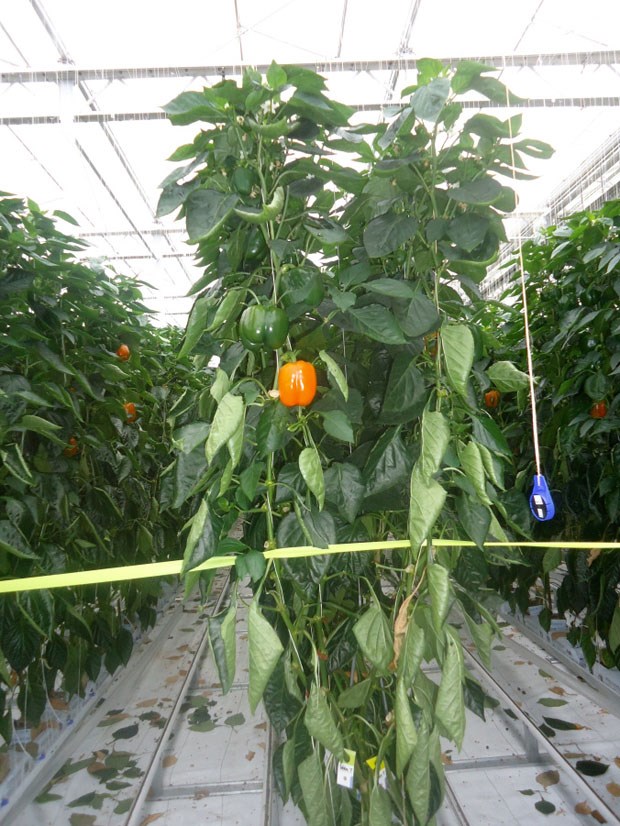
This gives you a better idea of how tall the plants are. I was totally amazed at what I saw and can’t wait to go next year. The BC greenhouse industry employs more than 3,500 people. There are 14,000 pepper plants grown per acre. That’s a lot of peppers!
